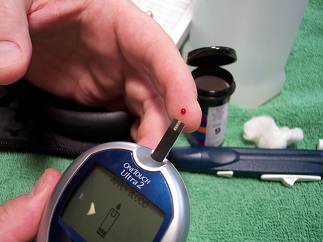Shared doctor visits may help diabetes self-care
Diabetes patients who agreed to attend group medical appointments at a Veterans Administration hospital showed health improvements similar to what most diabetes drugs would achieve, according to U.S. researchers.
Getting type 2 diabetes patients to take care of themselves and manage their disease daily is a challenge for healthcare providers, but shared doctor visits could be a useful tool, the study team says.
One way that hasn’t worked that well is to “lecture them,” according to senior study author Dr. Jeffrey Kravetz of the VA Connecticut Health Care System.
“People learn from each other and it is easier to learn from people who are in the same boat,” Kravetz said, adding that it is often more meaningful for people with diabetes to hear from a peer who understands the condition.
Type 2 diabetes can cause serious complications if it is not controlled by a combination of medication, diet and exercise. Healthcare providers agree the best way to approach this chronic condition is to educate patients to take care of themselves, but it’s tough to get people to be better self-managers.
Kravetz, together with pharmacist Alexander B. Guirguis and a team that included a nurse who specializes in diabetes, a registered dietitian and a health psychologist, tried a different approach: shared medical appointments, in which groups of three to 10 patients met in a 90-minute session every six to 12 weeks for a year.

Around 300 of those patients have exceedingly high levels of a blood protein known as A1C that indicates how well blood sugar has been controlled over the preceding several months. A1C levels greater than 9 percent are considered problematic.
For the study, selected patients with A1C around 9 percent or more were invited to join a shared medical appointment for diabetes management. Before their first visit, the patients agreed to sharing their medical results with the group, and were sent “report cards” with their blood test results.
 The 90-minute appointments combined education and consultations with the medical team with peer support and education. The emphasis, according to team leader Guirguis, was to try to make the sessions more “patient interactive as opposed to provider led.”
The 90-minute appointments combined education and consultations with the medical team with peer support and education. The emphasis, according to team leader Guirguis, was to try to make the sessions more “patient interactive as opposed to provider led.”
The team would review patients’ blood test results openly and encourage patients to talk about their challenges and successes. The sessions usually ended with a question and answer session and brief talk by the dietician.
Of the sixty patients who signed up, 40 attended at least two group visits, 19 attended three or more visits and 15 attended four shared medical appointments over the year. And by the study’s end, some patients saw their A1C levels drop by as much as 1 percent, a change Kravetz says is about what would be expected from medication.
For instance, patients with A1C averaging 10.75 percent at the beginning of the study who attended two group appointments dropped to an average A1C level of 9.51 percent. Patients with lower starting levels of A1C - around 9.5 percent - dropped to an average of around 8.5 percent after attending three meetings.
In contrast, a comparison group of patients who were invited to participate but did not follow through had A1C levels that were unchanged or rose about a quarter of a percent over the year.
While these results mean the patients are still within the type 2 diabetes range (an A1C of 6.5 percent and above is considered type 2 diabetes), Kravetz considers them “pretty comparable to some major therapies.” He noted that at most a diabetes drug reduces the A1C by up to 1 percent and these patients are doing better than medication alone.
The team found that patients often shared similar experiences and could talk about how they overcame some of their obstacles to better self care: “We are trying to get people to talk about their barriers rather than lecture to them,” he told Reuters Health.
The majority of the behavior changes were diet and medication related. Guirguis recalls one patient who strongly identified with another patient’s story about setting up his insulin next to the coffee maker.
Another benefit of this kind of peer support is that patients who are leery of going onto insulin can observe peers who “are living perfectly normal lives” while on the medication regime, he said.
Helen Altman Klein, professor emeritus at Wright State University in Ohio, who has conducted extensive studies of diabetes self management education programs, considers this study “small scale in terms of medical research, but filling a very important niche in the field of diabetes education particularly when it comes to trying to help deliver services inexpensively.
“VAs have limited resources and need to serve a lot of people,” she said. “Sometimes with a VA, it’s no small thing for some people to sign up and even make an appointment.”
The Connecticut VA is planning to continue the group appointment program, including expanding into a multisite study. The team is also experimenting with peer-to-peer telephone support, and enrolling patients for the next study, according to Guirguis.
SOURCE: American Journal of Medicine, online September 26, 2013
###
Improving Diabetes Control Using Shared Medical Appointments
published online 26 September 2013.
Alexander B. Guirguis, PharmD,
Joan Lugovich, RN,
Jennifer Jay, MS, RD,
Kathryn A. Sanders, PhD,
Seth T. Cioffi, PharmD,
Sean M. Jeffery, PharmD,
Jeffrey D. Kravetz, MD